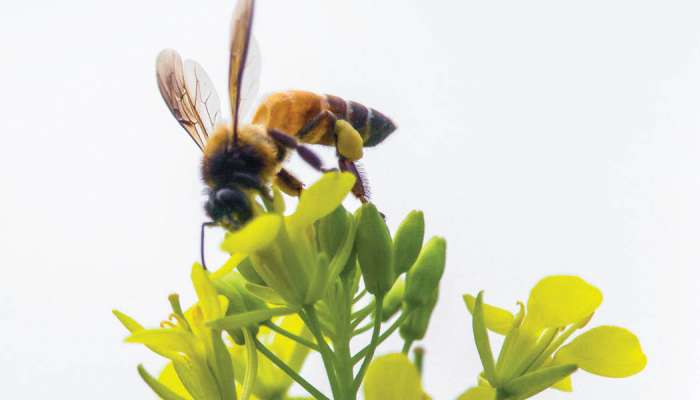
Many flowers, whether mallow, foxglove, or forget-me-not, feature vibrant patterns that are known in biology as nectar cues. They are thought to direct pollinating insects to the nectary as quickly as possible. This guiding activity could boost the insects' capacity to find food, which would also help the plant's pollen distribution.
A team from the Biocenter of Julius-Maximilians-Universitat Wurzburg (JMU) in Bavaria, Germany, has now deciphered the individual steps through which flower patterns increase the efficiency of terrestrial bumblebees (Bombus terrestris) for the first time. They demonstrate that nectar guides reduce the time needed for the bee's entire interaction with a flower by up to 30 percent - from approach to finding the nectar to departure.
What the flower patterns do
Surprisingly, flower patterns do not shorten the actual nectar search: After landing on a patterned flower, the bumblebees did not find the nectar any faster than on a flower without a pattern. However, the flower patterns shortened the approach flight time and ensured a strategically favourable landing position. Thus, they act like markings on a runway and help the bumblebees to coordinate their approach, reports the team led by Anna Stockl and Johannes Spaethe in the journal Functional Ecology.
Flower patterns also shorten the time until take-off: the insects stayed significantly shorter on patterned flowers after collecting nectar. "Bumblebees very often run to the edge of the petals for take-off," explains Johannes Spaethe. They may find this take-off site more quickly if they can orient themselves to a pattern.
This study was conducted using video tracking. The bumblebees visits to artificial flowers were analysed in the laboratory. The artificial flowers presented different pattern types or none at all; all of them had nectar on them.